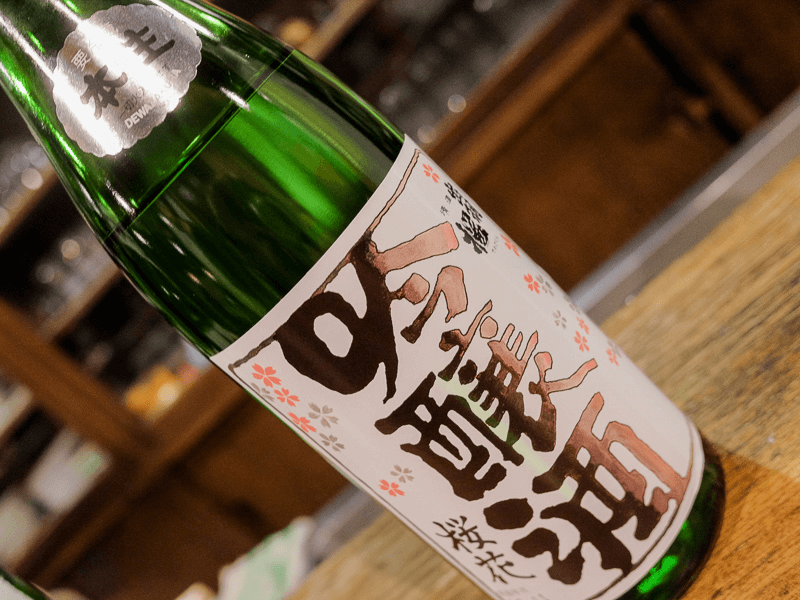Sake (酒) is a celebrated Japanese beverage with a rich history, deeply tied to culture and craftsmanship. Understanding the different types of sake—Junmai (純米), Honjozo (本醸造), Ginjo (吟醸), and Daiginjo (大吟醸)—can open the door to a variety of tasting experiences and deepen your appreciation of this traditional drink.
Each of these four types offers distinct characteristics, based on factors like rice polishing ratio, flavor profiles, and brewing techniques. Whether you’re new to sake or looking to expand your palate, knowing the essentials of these types will guide you on your sake journey.
Junmai: The Foundation of Sake
Junmai (純米) translates to "pure rice," and it is the foundation of many sake varieties. Made with only rice, water, yeast, and koji (麹, mold used to break down starch into sugar), Junmai sake is notable for its full-bodied and robust flavor. No additional alcohol is added during the brewing process, allowing the natural essence of the rice to shine.
The flavor of Junmai tends to be rich and earthy, with a strong umami (旨味) presence. It pairs well with hearty dishes like grilled meats, rich seafood, or miso-based (味噌) soups. Junmai can be enjoyed at various temperatures, from chilled to warm, depending on personal preference and the specific characteristics of the sake.

Honjozo: A Lighter Touch
Honjozo (本醸造) sake shares many similarities with Junmai, but with one significant difference: a small amount of distilled alcohol is added during brewing. This addition isn’t to increase the alcohol content but to refine the flavor, resulting in a smoother, more aromatic drink.
The flavor of Honjozo is generally lighter and more balanced, with a clean finish. Its subtle, fruity notes make it an excellent option for pairing with sushi (寿司), sashimi (刺身), or light grilled dishes. The added alcohol enhances the aroma and lends a softer texture, making Honjozo sake approachable and versatile.

Ginjo: A Step Toward Elegance
Ginjo (吟醸) sake takes refinement to the next level. To be classified as Ginjo, the rice must be polished down to at least 60% of its original size. This polishing process removes the outer layers of the rice, resulting in a lighter and more aromatic sake.
Ginjo sake is typically more fragrant, featuring fruity and floral notes like melon, pear, or apple. Its smooth, delicate taste is best enjoyed chilled, and it pairs well with lighter foods like salads, tempura (天ぷら), or fresh seafood. Ginjo’s refined character makes it a favorite for those seeking a more elegant drinking experience.

Daiginjo: The Pinnacle of Refinement
Daiginjo (大吟醸) sake represents the highest level of craftsmanship in sake brewing. The rice used for Daiginjo is polished down to at least 50%, and in some cases, it can be as much as 35%. This extreme level of polishing removes most of the outer rice layers, leaving only the starchy core.
The result is a sake that is incredibly light and complex, with floral and tropical fruit aromas. Daiginjo sake is often enjoyed as a sipping sake, allowing you to savor its intricate layers of flavor. Best served chilled, Daiginjo pairs beautifully with refined dishes like sashimi or steamed vegetables, where the delicate nuances of the sake can shine.

The Role of Rice Polishing and Flavor Profiles
What distinguishes these four types of sake most is the seimaibuai (精米歩合), or rice polishing ratio. The more the rice is polished, the more delicate and refined the resulting sake will be.
- Junmai (純米): Typically polished to 70% or more, resulting in a rich, robust flavor.
- Honjozo (本醸造): Also polished to around 70%, but with added alcohol for a smoother, lighter finish.
- Ginjo (吟醸): Polished to 60% or less, offering a lighter, more aromatic profile.
- Daiginjo (大吟醸): Polished to 50% or less, showcasing the highest level of refinement.
The level of polishing not only affects the body and texture but also influences the sake’s aroma and flavor complexity. As the rice becomes more refined, the flavors shift from full-bodied and earthy (like Junmai) to light and floral (like Daiginjo).
Ongoing Innovations in Sake Brewing
While these four categories provide a foundation, the sake industry is continually evolving. Many modern brewers are experimenting with new rice varieties, sustainable practices, and innovative brewing techniques. Some are using organic rice, while others are minimizing their environmental impact by conserving water and reducing waste in the brewing process.
Additionally, sake’s growing international popularity has led to exciting collaborations between Japanese brewers and winemakers or distillers from around the world. These partnerships are pushing the boundaries of traditional sake, creating unique, hybrid products that combine sake’s ancient techniques with modern innovations.
This blending of tradition and innovation continues to keep sake relevant and exciting, offering new flavors and experiences for both seasoned drinkers and those just beginning to explore the world of sake.
